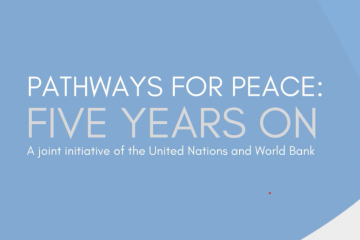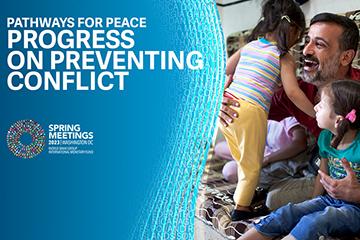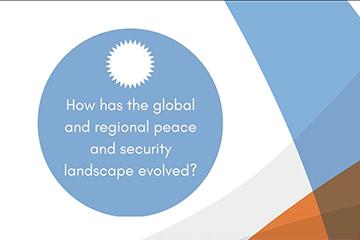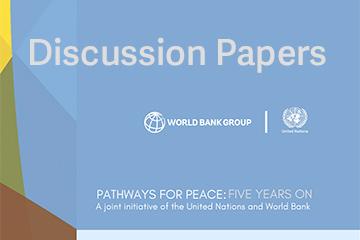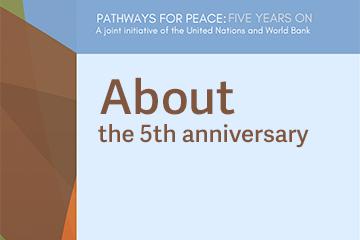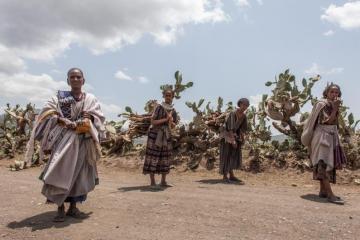Overview
Violent conflicts today are complex and increasingly protracted, involving more non-state groups and regional and international actors. It is estimated that by 2030 around half of the world’s poor will be living in countries affected by conflict and violence. Information and communications technology, population movements, and climate change are also creating shared risks that must be managed at both national and international levels. Pathways for Peace is a joint United Nations–World Bank Group study that originates from the conviction that the international community’s attention must urgently be refocused on prevention.
Spring 2023 marks the fifth anniversary of the publication of Pathways for Peace. In the lead up to the anniversary, the UN and the World Bank are gathering reflections from a wide variety of stakeholders on the legacy and continued relevance of the findings of this report in an evolving global landscape. Read more about the anniversary
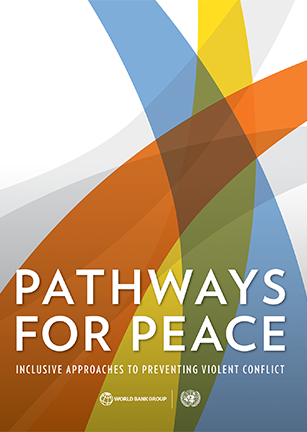
Spotlight
ABOUT THE 5TH ANNIVERSARY
Spring 2023 marks the fifth anniversary of the publication of the flagship UN-World Bank report “Pathways for Peace: Inclusive Approaches to Preventing Violent Conflict”. In the lead up to the anniversary, the UN and the World Bank are coordinating a joint initiative, gathering reflections from multilaterals, Member States, think tanks, civil society, and regional partners on the legacy and continued relevance of the findings of this report in an evolving global landscape. A series of papers and digital workshops will examine three key questions:
- Despite what appear to be recent fundamental shifts in the global landscape, does the research summarized in the 2018 Pathways for Peace report remain relevant as a guide for prevention and peacebuilding efforts today?
- Has research and the evidence base evolved over the last five years with regard to what dimensions are critical to prevention?
- To what degree have the UN, World Bank and other global and regional actors in this field built upon some of the key insights and recommendations of this report? How has this played out in different regions?
The reflections gathered through this initiative will serve as inputs to various processes including, for example, ongoing work on the Secretary-General’s New Agenda for Peace, the deliberations of the Peacebuilding Commission and other UN bodies, the mid-term review of the World Bank’s five-year FCV Strategy and the SDG16 Conference.
5th ANNIVERSARY DISCUSSION Papers
Using Conflict Data to Assess Changing Conflict Trends
By: Roudabeh Kishi
How the UN system can meet new and emerging prevention challenges.
By: Dr. Adam Day
